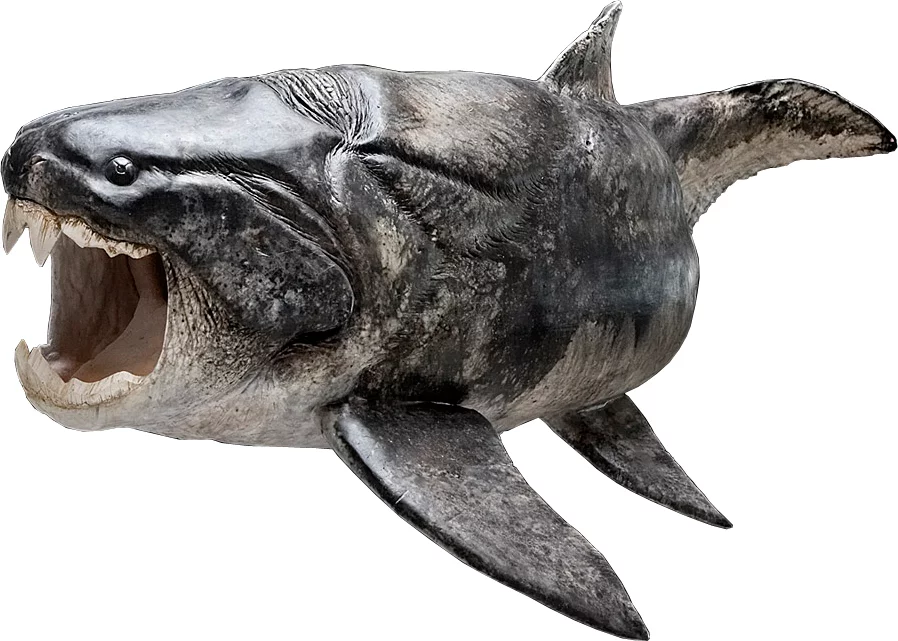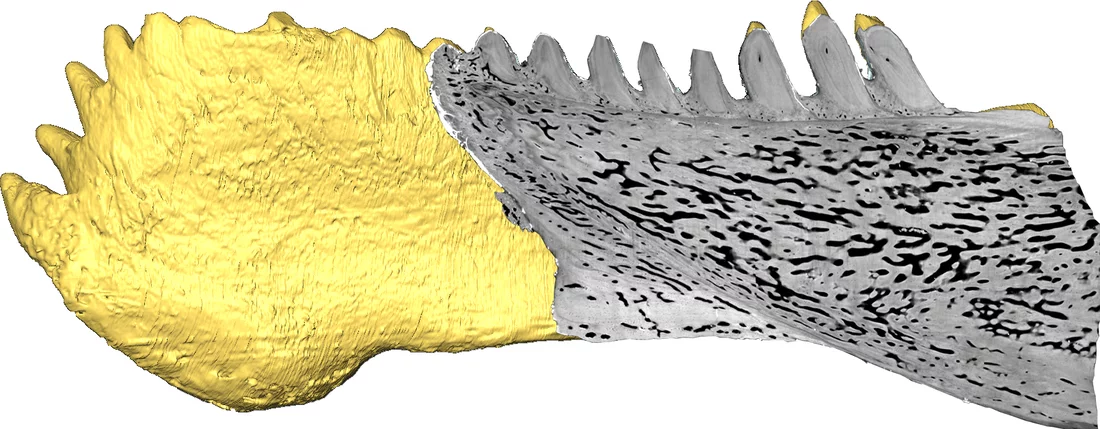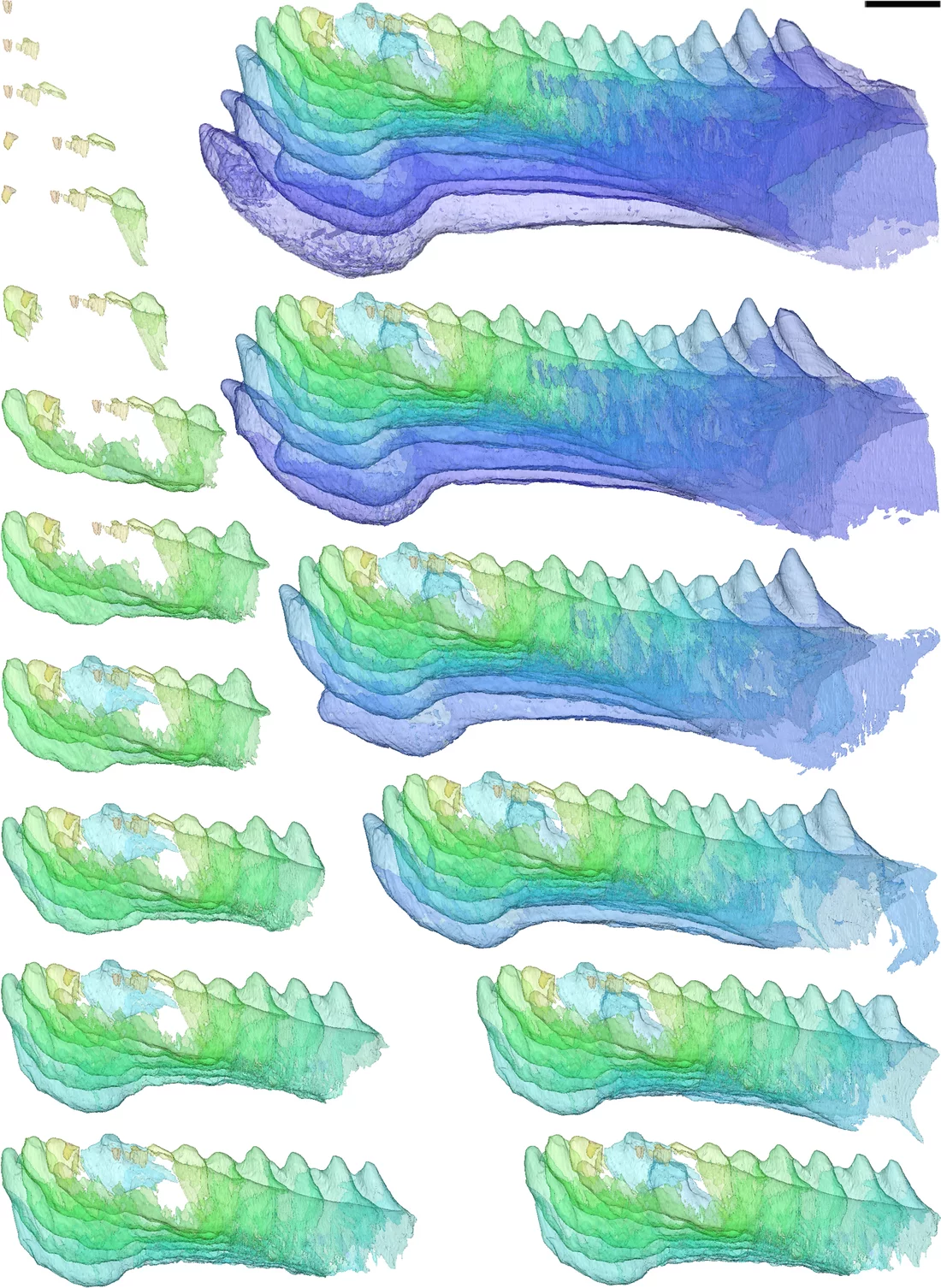Until recently, it was not clear whether the earliest vertebrates (animals with a backbone) which had jawbones already possessed teeth or not. Now, an international research team has shown that the jaws of the prehistoric fish Compagopiscis already had teeth. This demonstrates that teeth appeared at the same evolutionary time as jaws – or at least shortly afterwards. The leaders of this project were scientists from the University of Bristol, England, who carried out their decisive experiments at the SLS at the Paul Scherrer Institute, Switzerland, where they were able to actually look inside Compagopiscis fossils. The results of this research have just been published in the latest edition of the journal Nature.
It takes both teeth and jaws to make a pretty smile, but the evolutionary origins of these parts of our anatomy have only just been discovered, thanks to some particle physics and a long-dead fish.
All living jawed vertebrates (animals with backbones, such as humans) have teeth, but it has long been thought that the first jawed vertebrates lacked pearly gnashers, instead, capturing prey with gruesome scissor-like jaw-bones.
However, new research, led by the University of Bristol and published today in Nature, shows that these earliest jawed vertebrates possessed teeth too indicating that teeth evolved along with, or soon after, the evolution of jaws.
Palaeontologists from Bristol, the Natural History Museum and Curtin University, Australia, collaborated with physicists from Switzerland to study the jaws of a primitive jawed fish called Compagopiscis.
The international team studied fossils of Compagopiscis using high-energy X-rays at the Swiss Light Source at the Paul Scherrer Institute in Switzerland, revealing the structure and development of teeth and bones.
Lead author Martin Rücklin of the University of Bristol said: “We were able to visualise every tissue, cell and growth line within the bony jaws, allowing us to study the development of the jaws and teeth. We could then make comparisons with the embryology of living vertebrates, thus demonstrating that placoderms possessed teeth."
Co-author Professor Philip Donoghue of the University of Bristol’s School of Earth Sciences said: "This is solid evidence for the presence of teeth in these first jawed vertebrates and solves the debate on the origin of teeth."
Co-author Zerina Johanson from the Natural History Museum said: “These wonderfully preserved fossils from Australia yield many secrets of our evolutionary ancestry but research has been held back waiting for the kind of non-destructive technology that we used in this study. Without the collaborations between palaeontologists and physicists, our evolutionary history would remain hidden in the rocks.”
Professor Marco Stampanoni of the Paul Scherrer Institute said: "We performed non-invasive 3D microscopy on the sample using synchrotron radiation, a very powerful X-ray source. This technique allows us obtaining a perfect digital model and very detailed insight views of the old fossil without destroying it. Normally, our method delivers very high spatial resolution on tiny samples. For this experiment, we modified our setup and reconstruction algorithms in order to expand the field of view significantly while keeping the spatial resolution high."
This work was funded by the EU Framework Programme 7, the Natural Environment Research Council and the Paul Scherrer Institute.
Text: University of Bristol
About PSI
The Paul Scherrer Institute develops, builds and operates large, complex research facilities, and makes them available to the national and international research community. The Institute's own key research priorities are in the investigation of matter and material, energy and the environment; and human health. PSI is Switzerland's largest research institution, with 1500 members of staff and an annual budget of approximately 300 million CHF.
Contact
Dr Martin Rücklin, School of Earth Sciences, University of Bristol, Bristol, UKPhone: 0044 117 3315219; E-mail: M.Ruecklin@bristol.ac.uk
Prof. Philip Donoghue, School of Earth Sciences, Bristol, UK
Phone: 0044 117 954 5440; E-mail: Phil.Donoghue@bristol.ac.uk
Prof. Marco Stampanoni,
Institute for Biomedical Engineering at ETH Zurich and the Laboratory for Macromolecules and Bioimaging at the Paul Scherrer Institute, 5232 Villigen PSI, Switzerland
Phone: 0041 (0)56 310 4724; E-mail: marco.stampanoni@psi.ch
Dr. Federica Marone, Laboratory for Macromolecules and Bioimaging,
Paul Scherrer Institute, 5232 Villigen PSI, Switzerland
Phone: 0041 (0)56 310 5318; E-mail: federica.marone@psi.ch
Original publication
Development of teeth and jaws in the earliest jawed vertebratesMartin Rücklin, Philip C. J. Donoghue, Zerina Johanson, Kate Trinajstic, Federica Marone, Marco Stampanoni
Nature, Advance Online Publication 17 October 2012;
DOI: 10.1038/nature11555



